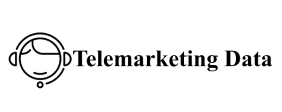Incubeta explains how to implement Consent Mode v2 and its advantages for advertisers
By Editorial Staff with No comments Web & App DevelopmentDigital Marketing
Share this content
Relatively recently, there has been a “crucial change in digital marketing that puts the focus on privacy: version 2 of Google’s Consent Mode ” or Consent Mode v2 . This update and regulation has made many people wonder “why? But a better question would be why not?”, as the digital marketing agency Incubeta points out in a press release sent to the media.
The regulatory framework that has come into force aims to protect consumers and ensure fair competition between the main digital players, known as gatekeepers, such as Amazon, Meta, Google, etc.
Thus, it warns that
“this update particularly affects Google advertisers ,” since the technology giant has designed a framework to integrate the consent preferences of website visitors, Consent Mode V2 (also known as Consent Mode v2).
What Google Consent Mode v2 allows advertisers to do
Consent Mode v2 allows advertisers to “submit consent to share data with Google, while allowing them to adjust tag behavior accordingly. This allows users to have control over their data and marketers to collect behavioral and conversion insights without compromising privacy.”
However, the company notes in its statement that “simply having a consent buy telemarketing lead banner on a website does not guarantee the implementation of this requirement.” In other words, “to activate Consent Mode effectively, companies must ensure that the user’s interactions with the consent banner dictate how their data is collected under GMP/GA4.”
How does Consent Mode benefit companies?
The advantage for businesses is that Consent Mode “makes it easy to control tag the development of vr/ar technology behavior in Google Tag Manager based on user consent level, while also offering a conversion model in Google Analytics,” Incubeta continues .
This measurement makes it “a crucial part of any company’s long-term be numbers measurement strategy. It also helps companies, or their web managers, when users refuse to share their data. When users choose not to share information, web measurement can experience a gap and you can lose visibility into the user journey through your website.”







